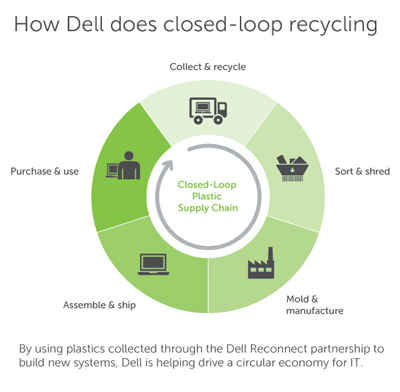How many miles did your shoes travel before they ended up on your feet? How about your shirt? Your cell phone? There is a good chance that many of you aren’t sure. Even as I type this out I don’t know where the plastic in my keyboard was sourced from, or even where my chair was manufactured. Every day we come in contact with a lot of products that have been sourced from all over the globe. This is part of how we’re able to live with some of the conveniences and luxuries that we do. I can eat an orange from Florida while living in Massachusetts, or use a table made of wood sourced from who knows where. This is not necessarily a bad thing, but if buying affordable things you knew were produced locally and produced in a sustainable way was an option would you take it? This choice is one that can become easier to make as more and more businesses move toward adoption circular models.
The idea of a circular economy is pretty simple to understand. It’s an economy that works in a loop, for the benefit of everyone in the community. Certain trades can be taught to community members which leads to the production of certain goods and products which helps to stimulate the local economy. This cycle of education and production can ultimately lead to a healthy and self sufficient community. Here at Earthos this is incredibly relevant, as it has to do with functioning on the bioregional level in a just and sustainable way. A circular economy is also a lot more than an idealistic dream for the future, it’s something that is happening now!
Something important to understand is that circular economies can take shape at different scales. A whole area can have a circular economy, or a certain part of a business can operate in a circular way, there are many different options. To better understand what a circular economy is, seeing it in action helps. An example of a closed loop operation can be found at Dell. When a Dell computer is made some of the manufacturing process makes use of plastic from older computers. Their site explains that “Using plastics recovered from technology collected through our recycling efforts to make new plastic parts gives these plastics an extended life, has a smaller carbon footprint and reduces costs.” They also use a graphic to illustrate the closed loop recycling process. [1]
 Dell illustrates how their closed-loop recycling system turns uses materials from old computers to create new ones.
Dell illustrates how their closed-loop recycling system turns uses materials from old computers to create new ones.
In addition to Dell other companies have similar commitments in closed loop economies. A very recent example of a circular economy on a more community level is something like the organization Carbon Tanzania that we wrote about in a previous blog post, if you missed it you can check it out here! One particularly interesting example is a company named Circle Economy who’s focus is to move the world toward closed loop economic systems. Their website explains the importance of their project:
Circularity has a key part to play not only in dramatically reducing our footprint but also in shaping a visionary and practical future for our planet. It is about becoming inspired by the biological processes of nature while retaining value at the heart of every design, manufacturing, and consumer decision – from renewable energy and remanufacturing of used parts to the ability for reuse designed into everything we consume.[2]
Started by Andy Riley (the mind behind Earth hour), his commitment to circular economic systems shows a deep understanding of what it takes to shift mindsets in the consumer world. His faith in circular economies comes from his idea that the right sorts of people can latch onto these ideals. He also believes that circular economies are not asking too much of people, just the willingness to adopt a change. Riley explains “A longstanding problem for the sustainability movement is that it’s tended to demand we stop this or that rather than offer attractive alternatives. The circular economy, however, isn’t saying we should stop consuming, it’s saying we should start consuming differently.”[3] This request for change isn’t that far fetched. Think about all of the environmentally conscious changes that have taken place in society recently, from energy efficient light bulbs, to composting becoming mainstream or something as new as fully electric cars. All of these actions help to walk people toward more environmentally conscious lifestyles.
Another interesting component of Riley’s philosophy is that ad agencies can be a positive driving force behind the adoption of circular economies. He claims that getting on board with the circular economy “isn’t just another ‘green’ thing” it’s something that has incentives for business as well. According to McKinsey circular economies could add up to $1 trillion to the global economy by 2025. They could also help to create new jobs, up to 100,000 in as little as five years. Moving toward a circular economy helps people, the planet and the economy.[4] This monetary incentive strikes a balance between adoption circular economic models for the sake of ecology and for the sake of profit. This helps it appeal to a wider audience.
The framework of bioregional urbanism is inherently addressed in these economy types as well. Growing produce within one’s bioregion to feed its people is an example of a circular system at play in the bioregion. Even something like biodiversity acts as a demonstration of how different species’ relations can be part of a healthy and productive ecosystem. Closed loop economic systems do a good job of illustrating the parallels between economics and ecology, and the ubiquitous nature of bioregional urbanism.
-Omari Spears
Referenced Articles: